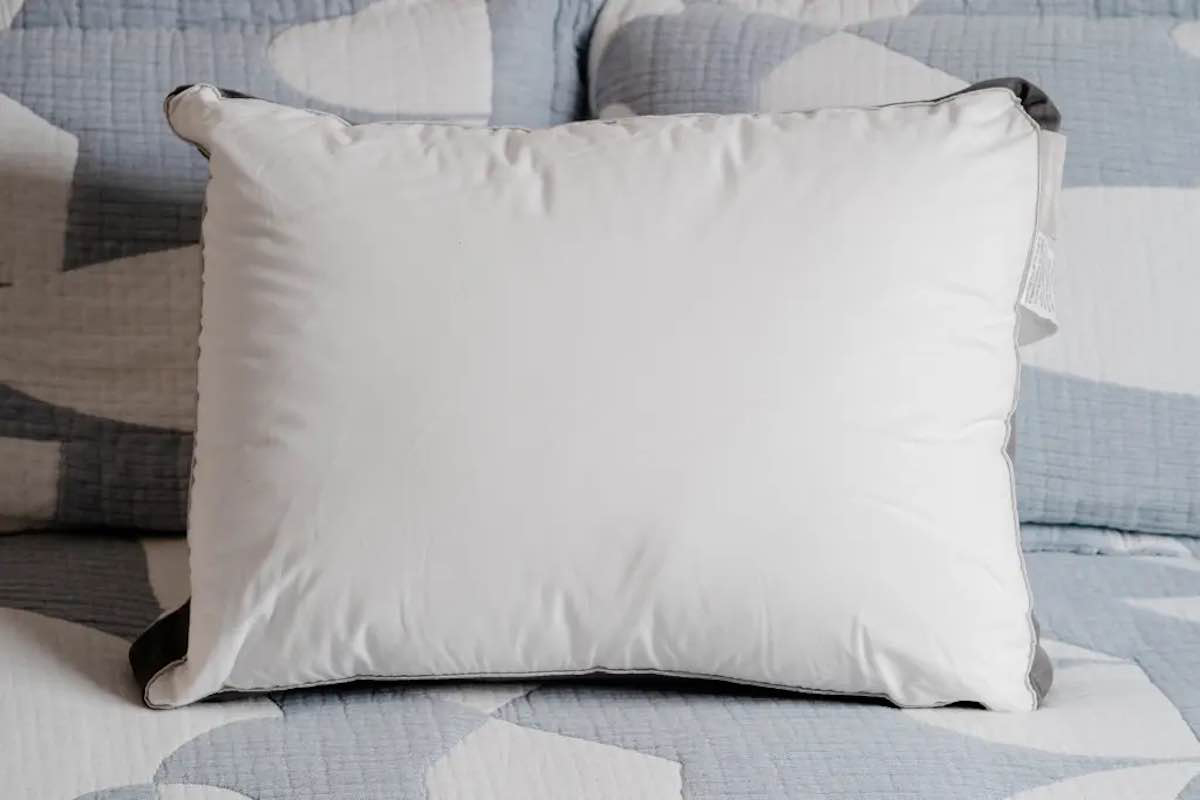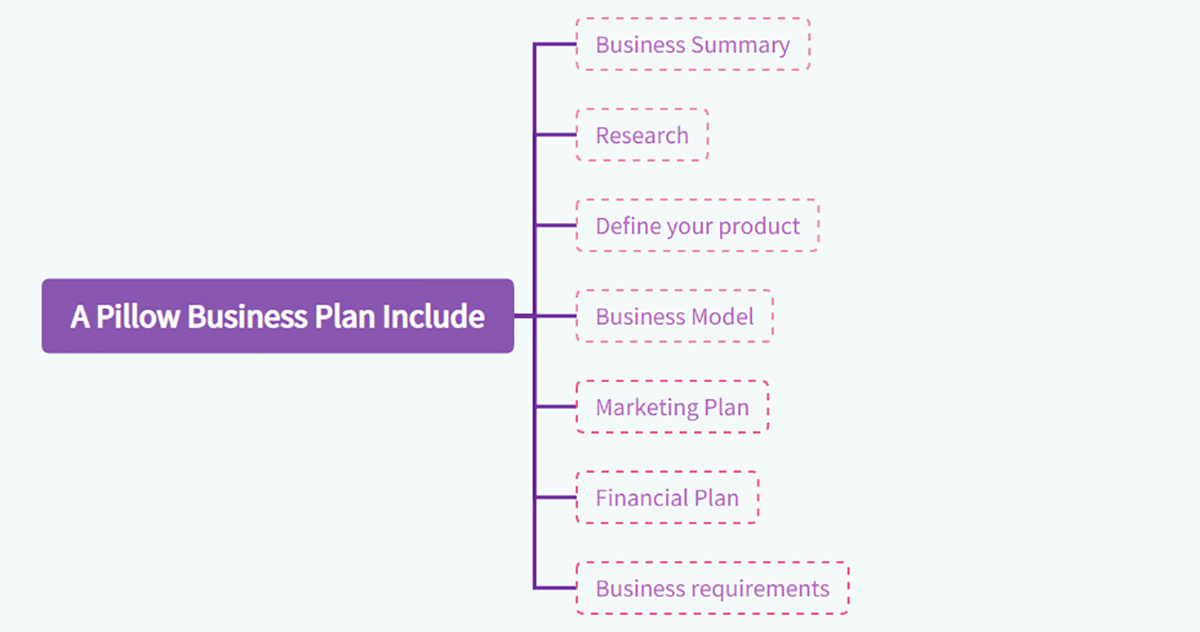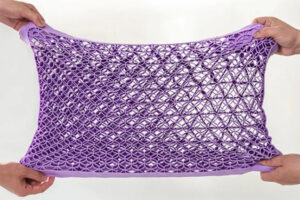Starting a pillow business can be an exciting venture, especially with the growing demand for quality home textile products. By starting a pillow business, you can sell pillows of all types and shapes, such as memory foam pillows, down pillows, throw pillows, and more. You can also easily target different markets, such as luxury pillows for high-end hotels or therapeutic pillows for people with medical conditions, regular pillows for bedding, and home decor products such as sheets, duvet covers, and blankets.
Our guide is for would-be entrepreneurs who are considering starting a pillow business, no matter how far along they are in their journey – whether you are just considering it or are doing market research, this guide will help you.
1. Market research and planning
When you start a pillow business, the first step is to understand the market and conduct a thorough analysis so that you understand customer intent, market demand, competition, and product pricing. Focus on making products based on market demand; you can make decorative pillows, custom pillows, printed pillowcases, and more.
1) Understand the pillow market
A good understanding of your target market is crucial. The global sleep pillow market has grown steadily in recent years, reaching $13.05 billion in 2021. This growth is expected to continue, with the market reaching $17.81 billion by 2027, with a compound annual growth rate (CAGR) of 5.15% from 2022 to 2027.
- To analyze the size and growth of the Pillows market.
- Identify your target customers, their needs, and their demographics.
- Analyze your competitors, competition, and pricing
- Find the best distribution channel (online, retail, or both)
- Set competitive prices according to market prices
- Ready for manufacturing, decoration, printing, or packaging.
2) Identify your niche market
There are many types of pillows available in the market, with different looks, different raw materials used, and different purposes. So, the first thing you need to do is to choose a market segment. There are all kinds of pillows available in the market, from body pillows to neck pillows to decorative pillows.
The following points must be considered while choosing a niche:
- Pay attention to the existing pillow market, popular materials, price ranges, and current trends, and choose one.
- Identify potential niches focused on demographics: your customers’ interests, hobbies, lifestyles, and sleep challenges.
- interests, market demands, customer needs, and select best-selling pillow categories.
- Understand market competition, profitability, scalability, and growth.
- Choose from custom pillows, decorative, memory foam, organic, travel pillows, and more.
- Consider material, size, color, sewing pattern, and design.

2. Plan your pillow business adequately
The first step on how to start a cushion business is not to make cushions. As a business owner, you have to decide many things. When you decide the amount you want to invest in the business, you should also decide on the business model that you are going to use and must decide on your target market.
Take some time to think about what you want your business to look like once it’s up and running, and how much time and money you’re willing to invest to make it happen. Business plans are an excellent tool for doing this. This document can help you if you decide to apply for a loan or grant to start your business, but it’s also very useful from a personal perspective because it lists everything you need to do and gives you the opportunity to decide how much you’re prepared to invest before you commit.
What Should a Pillow Business Plan Include:
- Business Summary: Business summary related to product offerings, industry value addition, best service commitment and every point of business operations.
- Research: Write a clear research plan on industry trends, growth, customers, and competition (strengths, weaknesses, and pricing), identify potential gaps in the market, and focus on different age groups.
- Define your product: Before making a pillow, it is important to have a clear description of your product, including pillow size, filling type, pattern, features, materials, etc.
- Business Model: Describe your business model—how you want to run your startup product line, such as manufacturing pillows, selling online, wholesale, or through a physical store.
- Marketing Plan: Develop an appropriate marketing plan that includes digital or offline strategies (social media, paid advertising, content, SEO, website – online) and (local partnerships, influencer collaborations, trade shows, promoted community events, etc. – offline).
- Financial Plan: A financial plan must be prepared before arranging funds, so list all types of expenses, including inventory, production supplies, staffing, marketing expenses, legal fees, and ongoing expenses.
- Business requirements: manufacturing supplies (equipment, tools, raw materials), production labor, legal requirements (licenses, registrations, taxes, compliance with local regulations, etc.).

3. Attend a training course
Getting training within your chosen industry is another way to understand how the pillow and cushion manufacturing business operates before deciding to start a new business.
Whichever method you take to gain insights before starting your pillow and cushion manufacturing business, make sure you are familiar with:
- The expertise required to run a successful business (Do you have the required skills?)
- What might a week in your pillow business look like (and does it describe you personally?)
- The potential turnover and long-term growth prospects of your pillow business (does it match your ambitions?)
- Possible actions if you decide to sell the company or retire (it’s never too early to think about an exit)
- At the end of this stage, you should be able to decide whether starting a pillow business is the right business idea for you based on your current personal situation (skills, desires, money, family, etc.).
4. Determine sales market and method
This is one of the most important considerations, and it will have a major impact on everything else, from what kind of business license you need to what types of products you offer. You have a lot of options, from selling quirky cushions directly to customers through your online store to working with a local interior designer to create custom pieces specifically for the space they are designing, and everything in between.
Do some research to determine what options you have both locally and online, and decide which ones best align with your vision for your business. Remember, this isn’t an all-or-nothing option. Maybe you start out online but later decide to partner with a local business. Maybe you start out by selling items on consignment at a local boutique and add online sales when you’re ready. It’s an important consideration, for sure, but it’s also one that can evolve when you’re ready.
It is very important to know all the similar businesses around you. This knowledge can help you find the right direction. When you finally make the right decision, you should continue to research where and how to sell decorative pillows.
5. Estimate your pillow business startup budget
Making pillows requires a dedicated workspace, raw materials, equipment, staff, etc. Also, there are many operational activities involved in the business, so making a financial calculation or estimate of the startup costs is the most important step. Estimate the initial expenses and operating expenses to make a perfect financial plan.
Startup costs depend on the following factors:
1) Business model
Handmade pillows (hand sewing, fabric, sewing materials, basic tools, and raw materials)
Customized printing: heat press, sublimation printing materials, bulk pillows, and other demands).
2) Scale and output
Start small: Start at home, you can manage it yourself and the production cost is low.
Large-scale production: rental costs, hiring staff, expensive machinery, and utilities.
3) Material type
Fabric and filling: Depends on the quality, luxury, or natural.
4) Marketing and Sales
- Online store: The cost of setting up an e-commerce website (platform fees, domain name, etc.).
- Physical stores: leasing retail space, management costs
Consider the given factors while estimating your startup budget, start with the basics (small scale), and scale up the business as you grow.

6. Procurement of materials and suppliers of pillow
Finding high-quality materials and reliable suppliers is essential to making the ideal pillow. Consider buying from a wholesaler or manufacturer to ensure competitive prices.
Don’t forget to explore eco-friendly options and stay up to date with the latest trends in pillow-making materials. Proper sourcing will help you create a pillow that stands out in the market. To help you make the right decision for choosing premium suppliers, here are some things to consider:
1) Research different types of pillow materials and their qualities
Explore common pillow materials like down, feathers, memory foam, polyester, and more.
Find out what each material is good for, as well as what it is not.
Consider factors like comfort, durability, hypoallergenic properties, and sustainability.
2) Find a reliable pillow material supplier or manufacturer
Conduct thorough online and offline research to find potential suppliers.
Suppliers are evaluated based on their reputation, reliability, and material quality.
Request samples from different suppliers to evaluate the materials yourself.
When choosing a supplier, consider factors such as pricing, minimum order quantities, and delivery times.
3) Consider environmentally friendly and sustainable options if applicable
Explore eco-friendly materials like organic cotton, bamboo, or recycled fibers.
Look for suppliers that prioritize sustainable practices and certifications.
Understand the impact of sustainable materials on your brand positioning and target markets.
Assess the cost impact and availability of environmentally friendly materials.
7. Marketing and sales of your pillow business
In order to promote your pillow products, a strong online presence, good activity on social media profiles or pages, and a focus on online sales are important.
The best promotional strategies in the current scenario are social media marketing, website, content marketing, SEO, online advertising, influencer marketing, and more.
- Social Media: Social platforms are a great way to market your business, even if you don’t pay for advertising directly (although that’s definitely an option!). Much of the marketing you do on social media is what’s called content marketing, which differs from traditional marketing because you provide value-added content (like a helpful blog or a fun product video) to your customers without requiring them to buy. This builds a relationship with them before they become customers, and it’s a great way to get the word out. Use high-quality images, videos, visual content, and infographics to draw them to your online store.
- Email Marketing: Email marketing is an incredibly powerful tool that allows you to directly reach your customers, unlike other forms of marketing. But with great power comes great responsibility! Spamming your customers may result in your email address being blacklisted, which can make it much harder to reach your customers—all your emails will be caught in spam filters! So think carefully about what you send, to whom, and when.
- Printed Materials Think business cards, brochures, catalogs – you name it! Not everything may be suitable for your business – if you don’t host live events, you don’t need branded tablecloths! – but have a chat with a local printer and browse through the offerings of some online printing companies to see which ones are the most cost-effective and valuable for you.
- Website: Unlike the ones discussed above, in this case, your customers have to find you. The fact is, people are looking for quality products. When customers give good reviews about your homemade pillows, new people will start to know about your business. That is why you should have an awesome website for your business. If you don’t have a website, they may not find anything when they search for you online.
8. Expansion and growth of your pillow business
In the process of promoting business development, it is crucial to continuously monitor sales data and customer feedback. Through effective analysis, enterprises can not only maintain market competitiveness but also continuously optimize products and services.
- Monitor sales and customer feedback: Establish a clear sales tracking system. By regularly analyzing sales performance, you can promptly discover changes in market trends and customer needs, and make flexible adjustments.
- Expand your product range or launch a new pillow model: Research market trends and customer demand for new pillows and consider introducing variations, such as different sizes, shapes, or materials. You can also test and iterate new product ideas based on customer feedback and market response.
- Find potential wholesale customers: such as hotels, retailers, or interior designers, understand their needs, and develop pricing strategies and packages for bulk orders.
- Seeking partnerships or collaborations: In the process of business development, through exploration and discovery, identify complementary businesses or brands that can be collaborated, explore cooperative marketing, joint product supply, or distribution channels. In the process of cooperation, both parties can also use each other’s customer base to open up new markets and increase visibility.

9. Conclusion
Starting a pillow business requires careful planning and creativity, but with the right approach, it can be a very rewarding endeavor. By focusing on quality, design, and marketing, you can carve out a niche in the competitive home textile market. Embrace the journey and watch your pillow business flourish!
How useful was this post?
Click on a star to rate it!
Average rating 5 / 5. Vote count: 1
No votes so far! Be the first to rate this post.








